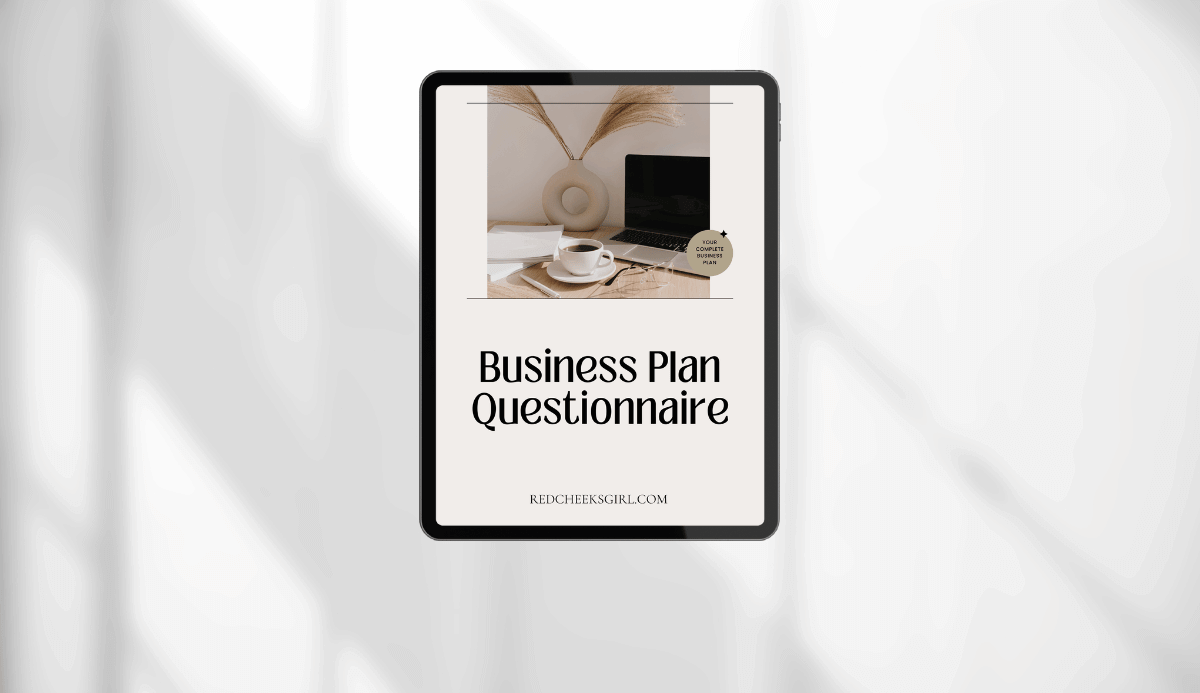
Are you passionate about baking and dreaming of opening your own bakery? Whether you’re envisioning a cozy neighborhood café serving fresh croissants and artisan breads, or a bustling bakery known for its custom cakes and pastries, turning your culinary passion into a profitable business requires careful planning and strategic thinking.
The bakery industry in the United States continues to rise, with consumers increasingly seeking authentic, locally-made baked goods over mass-produced alternatives. In fact, the artisanal bakery market has seen steady growth of 2-3% annually, driven by demand for quality ingredients, unique flavors, and the irreplaceable experience of walking into a warm bakery filled with the aroma of fresh bread.
But here’s the truth: while the smell of success might be sweet, the path to get there requires more than just exceptional baking skills. From securing the right location and equipment to understanding your market and managing finances, launching a successful bakery demands a comprehensive business plan that addresses every aspect of your venture.
In this detailed guide, we’ll walk you through a complete bakery business plan template that covers everything from initial startup costs (typically ranging from $150,000 to $250,000) to projected revenues and marketing strategies. Whether you’re seeking investors, applying for loans, or simply want a roadmap for your entrepreneurial journey, this business plan will help you knead together all the ingredients for a thriving bakery business.
Ready to transform your baking passion into a profitable enterprise? Let’s dive into the essential components that will help your bakery rise above the competition.
Bakery Business Plan
1. Executive Summary
Business Overview
- Business Name: [Your Bakery Name]
- Business Type: Retail bakery specializing in artisanal breads, pastries, cakes, and custom orders
- Location: [Your chosen city, state]
- Legal Structure: [LLC/Corporation/Sole Proprietorship]
- Founded: [Year]
Mission Statement
To provide our community with freshly baked, high-quality artisanal goods made from premium ingredients while delivering exceptional customer service in a warm, welcoming environment.
Key Success Factors
- Premium quality products using fresh, locally-sourced ingredients
- Strategic location with high foot traffic
- Experienced baking team with proven expertise
- Strong community engagement and customer loyalty programs
- Diverse product offerings including specialty and dietary-restriction options
Financial Highlights
- Initial Investment Required: $150,000 – $250,000
- Projected Break-even: Month 8-12
- Expected Annual Revenue (Year 3): $500,000 – $750,000
- Target Net Profit Margin: 10-15%
2. Company Description
Business Concept
[Your Bakery Name] will be a full-service retail bakery offering:
- Fresh daily bread varieties
- Morning pastries and croissants
- Custom cakes for special occasions
- Coffee and beverage service
- Lunch items (sandwiches, salads)
- Gluten-free and vegan options
Value Proposition
We differentiate ourselves through:
- Artisan techniques and traditional recipes
- Use of organic and locally-sourced ingredients
- Custom design capabilities for special events
- Community-focused approach with local partnerships
- Exceptional customer service and bakery experience
Business Goals
Short-term (Year 1):
- Establish strong local customer base
- Achieve monthly revenue of $30,000 by month 6
- Build brand recognition in the community
- Develop efficient operations and systems
Long-term (Years 2-5):
- Expand to include catering services
- Open second location or commissary kitchen
- Develop wholesale accounts with local cafes
- Launch e-commerce platform for special orders
3. Market Analysis
Industry Overview
The US bakery industry generates approximately $35 billion annually, with steady growth of 2-3% per year. Key trends include:
- Increasing demand for artisanal and specialty baked goods
- Growing interest in locally-sourced and organic products
- Rising popularity of gluten-free and dietary-specific options
- Shift toward experiential retail and community gathering spaces
Target Market
Primary Customer Segments:
- Local Residents (40%)
- Families seeking fresh daily bread
- Health-conscious consumers
- Age: 25-65
- Income: $40,000+
- Morning Commuters (30%)
- Professionals seeking breakfast items
- Coffee enthusiasts
- Age: 25-55
- Income: $50,000+
- Special Occasion Customers (20%)
- Wedding and birthday cake orders
- Corporate events
- Holiday celebrations
- Wholesale Accounts (10%)
- Local cafes and restaurants
- Corporate offices
- Event planners
Competitive Analysis
Direct Competitors:
- [Local Bakery 1]: Established presence, limited variety
- [Local Bakery 2]: Chain operation, less personalized service
- [Grocery Store Bakeries]: Convenient but lower quality
Competitive Advantages:
- Superior product quality and freshness
- Customization capabilities
- Strong community connections
- Unique product offerings
- Competitive pricing with premium positioning
Market Size and Growth Potential
- Local population: [Research your area]
- Average household spending on bakery items: $300-500/year
- Total addressable market: $[Calculate based on local data]
- Expected market share: 5-8% within 2 years
4. Products and Services
Core Product Lines
- Artisan Breads
- Sourdough varieties
- French baguettes
- Whole grain options
- Specialty seasonal breads
- Morning Pastries
- Croissants (plain, chocolate, almond)
- Danish pastries
- Muffins and scones
- Cinnamon rolls
- Cakes and Desserts
- Custom celebration cakes
- Cupcakes
- Tarts and pies
- Cookies and brownies
- Savory Items
- Sandwiches on house-made bread
- Quiches
- Savory pastries
- Seasonal salads
- Beverages
- Premium coffee program
- Specialty teas
- Fresh juices
- Seasonal drinks
Special Services
- Custom cake design and decoration
- Catering for events
- Bread subscription service
- Baking classes and workshops
- Holiday pre-order programs
5. Marketing and Sales Strategy
Marketing Mix
- Product: High-quality, fresh, artisanal baked goods
- Price: Premium pricing with value positioning
- Place: Retail storefront with online ordering
- Promotion: Community-focused marketing approach
Marketing Channels
- Digital Marketing
- Instagram and Facebook (visual content)
- Google My Business optimization
- Email newsletter for promotions
- Website with online ordering
- Local Marketing
- Farmers market presence
- Community event sponsorships
- Partnerships with local businesses
- Loyalty program
- In-Store Experience
- Sampling programs
- Seasonal displays
- Customer education (ingredient sourcing)
Customer Acquisition Strategy
- Grand opening event with free samples
- Early bird specials for morning customers
- Referral program incentives
- Corporate account development
- Social media contests and giveaways
Customer Retention
- Loyalty card program (10th item free)
- Birthday club with special offers
- Seasonal menu rotations
- Exceptional customer service training
- Community involvement and giving back
6. Operations Plan
Location and Facilities
- Size: 2,500-3,500 sq ft
- Layout:
- Customer area: 1,000 sq ft
- Kitchen/production: 1,500 sq ft
- Storage: 500 sq ft
- Features:
- Display cases
- Seating for 20-30
- Commercial kitchen equipment
- POS system
Equipment Needs
Major Equipment:
- Commercial ovens (2-3 deck ovens)
- Mixers (20qt and 60qt)
- Proofer
- Refrigeration units
- Display cases
- Espresso machine
Estimated Equipment Cost: $75,000-100,000
Suppliers
- Local flour mill for specialty flours
- Regional produce distributors
- Dairy cooperative for milk/cream
- Chocolate and specialty ingredients suppliers
- Packaging and supplies vendors
Operating Hours
- Monday-Friday: 6:30 AM – 7:00 PM
- Saturday: 7:00 AM – 8:00 PM
- Sunday: 8:00 AM – 5:00 PM
Production Schedule
- 3:00 AM – 6:00 AM: Bread production
- 4:00 AM – 7:00 AM: Pastry production
- 8:00 AM – 2:00 PM: Custom orders and lunch prep
- 2:00 PM – 5:00 PM: Next day prep
Quality Control
- Standardized recipes and procedures
- Daily fresh production
- Temperature monitoring
- Customer feedback system
- Regular staff training
7. Management and Organization
Organizational Structure
- Owner/General Manager: Overall operations, finance, strategy
- Head Baker: Production management, recipe development
- Pastry Chef: Cakes, pastries, custom orders
- Shift Supervisors (2): Daily operations, customer service
- Bakers (3-4): Production staff
- Counter Staff (4-6): Sales and service
Key Personnel
Owner/General Manager
- [Your name and background]
- Business management experience
- Passion for artisan baking
Head Baker
- 10+ years professional baking experience
- Expertise in artisan bread production
- Recipe development skills
Pastry Chef
- Formal culinary training
- Cake decorating expertise
- Custom order management
Staffing Plan
- Initial staff: 8-10 employees
- Mix of full-time and part-time
- Cross-training for flexibility
- Seasonal hiring for busy periods
Training Program
- Initial 2-week training for all staff
- Ongoing skill development
- Customer service standards
- Food safety certification
- Product knowledge
Compensation and Benefits
- Competitive hourly wages ($15-25/hour)
- Performance bonuses
- Employee discounts
- Paid time off for full-time staff
- Opportunities for advancement
8. Financial Projections
Startup Costs
| Category | Amount |
|---|---|
| Equipment | $75,000 – $100,000 |
| Leasehold Improvements | $30,000 – $50,000 |
| Initial Inventory | $10,000 |
| Marketing Launch | $5,000 |
| Working Capital | $20,000 |
| Licenses and Permits | $3,000 |
| Professional Fees | $5,000 |
| Contingency (10%) | $15,000 |
| Total | $163,000 – $213,000 |
Revenue Projections (Year 1)
| Month | Revenue | Growth % |
|---|---|---|
| 1 | $15,000 | – |
| 2 | $18,000 | 20% |
| 3 | $22,000 | 22% |
| 4 | $26,000 | 18% |
| 5 | $28,000 | 8% |
| 6 | $30,000 | 7% |
| 7 | $32,000 | 7% |
| 8 | $34,000 | 6% |
| 9 | $36,000 | 6% |
| 10 | $38,000 | 6% |
| 11 | $40,000 | 5% |
| 12 | $42,000 | 5% |
| Total | $361,000 |
Operating Expenses (Monthly)
| Category | Amount | % of Revenue |
|---|---|---|
| Food Costs | $10,500 | 30% |
| Labor | $10,500 | 30% |
| Rent | $4,000 | 11% |
| Utilities | $1,500 | 4% |
| Marketing | $1,000 | 3% |
| Insurance | $800 | 2% |
| Other | $1,200 | 3% |
| Total | $29,500 | 84% |
Break-even Analysis
- Fixed Costs: $17,000/month
- Variable Costs: 45% of revenue
- Break-even Revenue: $31,000/month
- Expected Break-even: Month 6-7
3-Year Financial Summary
| Year | Revenue | Expenses | Net Profit | Margin |
|---|---|---|---|---|
| 1 | $361,000 | $318,000 | $43,000 | 12% |
| 2 | $480,000 | $408,000 | $72,000 | 15% |
| 3 | $600,000 | $492,000 | $108,000 | 18% |
9. Risk Analysis
Potential Risks and Mitigation
- Market Competition
- Risk: New bakeries or cafes opening
- Mitigation: Strong brand loyalty, unique products
- Economic Downturn
- Risk: Reduced consumer spending
- Mitigation: Value options, corporate accounts
- Supply Chain Issues
- Risk: Ingredient shortages or price increases
- Mitigation: Multiple suppliers, flexible menu
- Staffing Challenges
- Risk: High turnover, skill shortage
- Mitigation: Competitive pay, positive culture
- Seasonal Fluctuations
- Risk: Slow summer months
- Mitigation: Catering services, seasonal products
Contingency Planning
- Emergency fund: 3 months operating expenses
- Business interruption insurance
- Alternative revenue streams
- Flexible cost structure
10. Implementation Timeline
Pre-Launch Phase (Months 1-3)
- Secure financing
- Sign lease and permits
- Design and build-out
- Equipment procurement
- Staff hiring and training
- Marketing launch preparation
Launch Phase (Month 4)
- Soft opening with limited hours
- Staff adjustments
- Customer feedback collection
- Grand opening event
Growth Phase (Months 5-12)
- Full operation implementation
- Marketing campaign execution
- Customer base building
- Product line refinement
- Catering service launch
Expansion Phase (Year 2+)
- Wholesale account development
- Second location evaluation
- Product line expansion
- E-commerce platform
- Franchise consideration
Appendices
A. Financial Statements
- Detailed cash flow projections
- Balance sheet projections
- Income statement projections
B. Market Research
- Demographics data
- Competition analysis
- Customer survey results
C. Legal Documents
- Business registration
- Insurance policies
- Lease agreements
- Supplier contracts
D. Marketing Materials
- Logo and branding
- Sample menus
- Website mockups
- Social media strategy
E. References
- Professional references
- Supplier testimonials
- Industry associations
- Banking relationships





Pingback: 13 Christmas Gifts for the Person Who Has Everything